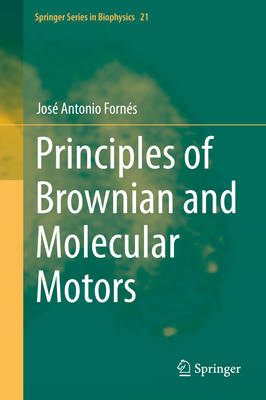
- Afhalen na 1 uur in een winkel met voorraad
- Gratis thuislevering in België vanaf € 30
- Ruim aanbod met 7 miljoen producten
- Afhalen na 1 uur in een winkel met voorraad
- Gratis thuislevering in België vanaf € 30
- Ruim aanbod met 7 miljoen producten
Zoeken
Omschrijving
Molecular motors convert chemical energy (typically from ATP hydrolysis) to directed motion and mechanical work. Biomolecular motors are proteins able of converting chemical energy into mechanical motion and force. Because of their dimension, the many small parts that make up molecular motors must operate at energies only a few times greater than those of the thermal baths. The description of molecular motors must be stochastic in nature. Their actions are often described in terms of Brownian Ratchets mechanisms. In order to describe the principles used in their movement, we need to use the tools that theoretical physics give us. In this book we centralize on the some physical mechanisms of molecular motors.
Specificaties
Betrokkenen
- Auteur(s):
- Uitgeverij:
Inhoud
- Aantal bladzijden:
- 194
- Taal:
- Engels
- Reeks:
- Reeksnummer:
- nr. 21
Eigenschappen
- Productcode (EAN):
- 9783030649562
- Verschijningsdatum:
- 5/02/2021
- Uitvoering:
- Hardcover
- Formaat:
- Genaaid
- Afmetingen:
- 196 mm x 239 mm
- Gewicht:
- 408 g

Alleen bij Standaard Boekhandel
+ 210 punten op je klantenkaart van Standaard Boekhandel
Beoordelingen
We publiceren alleen reviews die voldoen aan de voorwaarden voor reviews. Bekijk onze voorwaarden voor reviews.











